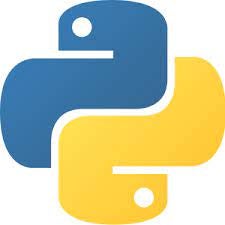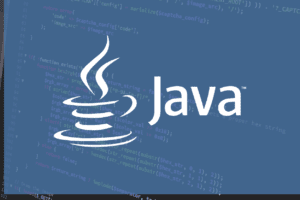Java and Python are widely considered the top two programming languages in the world and are, arguably, the most widely used. Others will point out JavaScript as the reigning king, and while that may be true, that is typically because developers will learn JavaScript as a second or third language and not their primary. In today’s programming tutorial, we will examine both Java and Python and look at the differences between the two coding languages. We will also explore the benefits and use cases for each so you can make an informed decision when deciding between the two.
Reading: Project management software and tools for developers
Overview of Java
Java was created by Sun Microsystems back in 1995, making it a well-aged language that has plenty of time to be tested and improved upon by the developer community. Since its inception, Java has grown to become one of the most popular programming languages in the world, frequently ranking in the top five spots for most used languages, sharing the spotlight with such notables as JavaScript, C#, C, and Python. Java is considered by many to be an object-oriented programming language, due to its support of objects and classes. The truth, however, is that Java has object-oriented features and is not truly OOP. Part of this has to do with its distinction of having primitive data types.
Java was built on the concept of WORA or WORE, which loosely stands for write once, run anywhere. This platform-independence ability comes courtesy of the Java Virtual Machine (JVM), which makes it so any program written in Java can run on any system that has the JVM installed.
Java has many benefits and is known to be a very powerful and robust language. It has a strong type system, meaning that every variable a developer creates must be declared with a data type prior to being used. Enforcing strong types is beneficial to coders because it helps reduce error by catching them at compile-time, versus run-time, making the debugging process easier. In addition, Java has a built-in garbage collector, which automatically manages memory, memory allocation, and memory deallocation so that the programmer does not have to account for this tedious process in their code.
Scalability refers to the ability to grow and adapt as more resources and users are applied to a system. Java is well-known for its scalability, making it a great option for enterprise applications that require high performance, security, and reliability. Java can be found in Enterprise-level apps in the financial industry as well the back-bone for large scale web apps. Java’s scalability is due to the language’s support for multithreading, which allows applications to run multiple tasks concurrently or at the same time.
As stated, Java has been around quite a while (though not as long as other languages like C) and, as such, enjoys a large, thriving, and active community. This equates to the language having a ton of available resources for learning and troubleshooting any issues that may arise in your codebase. Java also has a wide range of libraries and frameworks, which help developers create “skeletons” of applications, speeding up the development process, reducing errors, and making code more efficient.
Reading: Top Online Training Courses and Bundles for Java
Overview of Python

Python is a little older than Java, being developed in the late 1980s by none other than Guido van Rossum. Since then, it has become one of the most popular programming languages in use. Like Java, it ranks up in the top five most popular languages, battling it out with Java for the number one or number two spot. Python is a high-level, interpreted language that is beloved by developers for its simplicity and ease of use. Python is used for scripting and automation, as well as data analysis, game development, mobile development, machine learning, and artificial intelligence, as well as to create desktop applications and web apps.
One important feature of Python is its readability. Python’s syntax was designed to be human readable and easy to understand. Most people can read a block of Python code and immediately know what the programmer intended for it to do, making it a popular choice for beginning developers or those that want to add a second (or third) language to their repertoire.
Adding to Python’s robustness is a large standard library, which includes modules for a multitude of tasks, including web development, networking, game development, and data manipulation.
Reading: Top Online Courses to Learn Python
Differences Between Java and Python
Now that we have a better understanding of each language, we can look at how Java and Python differ from one another as a programming language and why a developer might choose one over the other, including:
- Syntax and syntactical differences
- type system
- Libraries and Frameworks
- performance
Syntax Differences Between Java and Python
One of the biggest differences between Python and Java lies in their syntax, as one might suspect. Python is a dynamically-typed language, meaning variables in Python can change their data types at runtime. Java, meanwhile, is statically-typed, meaning that Java variables have a fixed data type that cannot be changed at runtime and must be defined at creation.
Here is a code example demonstrating how to assign values to a variable in Python:
x = 5 print(x) x = “hello” print(x)
In the above example, x is assigned the integer value of 5. We then print x to show its current value, then assign the string value of hello. We then, once more, print out the value of x to show that it has now changed. This change is only possible because Python is dynamically typed, and, therefore, x can change its data type at runtime.
The output of running the above code would be:
5 Hello
In Java, the same program would look like the following example code:
int x = 5; System.out.println(x); x = “hello”; System.out.println(x);
In the above example, we start by declaring x as an int data type, and then assign it a numeric value, wish Java allows. We then print the value of the variable to show that it does, in fact, contain 5. Next, we attempt to assign x the string value hello, followed by a print statement to show the anticipated changed. However, when we run this code, we will receive a compilation error, as Java is statically-typed and x cannot change its data type at runtime.
Generally speaking, Python’s syntax is considered to be more concise and human-readable than Java’s. This is due to Python’s lack of boilerplate and use of whitespace to delimit blocks of code. On the flip side, Java’s static typing helps developers catch errors at compile-time and makes code more maintainable, which is especially useful in larger projects.
Java and Python Libraries and Frameworks
Another crucial difference between Python and Java has to be done with libraries and frameworks. Python is well-known for its very extensive library, with a plethora of libraries for data analysis, machine learning, GUI development, web development, and gaming. Some of the most popular Python libraries you may have heard include NumPy, Tkinter, PyGame, Pandas, Matplotlib, and TensorFlow.
Not to be outdone, Java also has a rich library, with many popular libraries for web development, GUI programming, and embedded development. Popular Java libraries include Spring, Hibernate, and JavaFX.
In addition to their vast array of libraries, both Python and Java have plenty of web frameworks, making it easy to build web applications. Python web frameworks include Django, Flask, and Pyramid, while popular Java web frameworks include stalwarts such as Spring Boot, Struts, and Play.
Below is an example of how to use Python’s NumPy library to perform a complex matrix multiplication:
import numpy as np # Code to create two matrices a = np.array([[1, 2], [3, 4]]) b = np.array([[5, 6], [7, 8]]) # Code to multiply the matrix c = np.dot(a, b) # Print the results print(c)
The above Python code uses the NumPy library to create two matrices, a and b, and then perform a matrix multiplication using the dot() method. The resulting matrix c then gets printed. Accomplishing this without the NumPy library would take a lot more code and be more prone to errors.
We could accomplish the same thing in Java, using the code below, which makes use of the java.util.Arrays class:
import java.util.Arrays; public class MatrixMultiplication { public static void main(String[] args) { // Creating our two matrices int[][] a = {{1, 2}, {3, 4}}; internal[][] b = {{5, 6}, {7, 8}}; // Performing our multiplication on our matrices int[][] c = matrixMultiply(a, b); // Printing the result System.out.println(Arrays.deepToString(c)); } public static int[][] matrixMultiply(int[][] a, internal[][] b) { int m1 = a.length; int n1 = a[0].length; int m2 = b.length; int n2 = b[0].length; if (n1 != m2) { throw new IllegalArgumentException(“These matrices are not compatible for multiplication”); } internal[][] c = new int[m1][n2]; for (int i = 0; i < m1; i++) { for (int j = 0; j < n2; j++) { int sum = 0; for (int k = 0; k < n1; k++) { sum += a[i][k] * b[k][j]; } c[i][j] = sum; } } return c; } }
As you can see, the Java version of this code is much more complicated. In our Java code, we created our two matrices and then used a custom matrixMultiply() function to multiply or matrices. The resulting matrix c then gets printed using the Arrays.deepToString() method.
In general, while both languages enjoy strong libraries and frameworks, Python’s library is considered more extensive and robust than Java’s, especially when it comes to scientific ventures, like data analysis, deep learning, AI, and machine learning.
Reading: Top Python Frameworks
performance
The last difference we will look at involves performance. Python, being an interpreted language, has code that gets executed on-the-fly at runtime. A downside to this is that it can result in slower performance when compared to compiled languages like Java. This is especially true for computationally-intensive tasks or tasks that require a lot of processing resources.
While Java is, technically, faster for processor-intensive tasks, Python is generally considered “speedy” enough for most use cases. Additionally, Python has one more trick up ots sleeve to counter Java’s speed – extensibility; Python uses libraries built on C to perform faster, including our aforementioned NumPy and TensorFlow.
Final Thoughts on Java versus Python
In this programming tutorial, we looked at both Python and Java, each of which are both powerful programming languages with their own unique set of strengths and weaknesses. Python’s syntax tends to be more concise and readable by humans than Java’s syntax, and Python’s library and frameworks are more extensive, particularly in the mathematical and scientific arenas. Java’s static typing is more helpful for avoiding errors and catching errors at run-time, which can make it more maintainable than Python. Java is also considered better at application performance than Python, though this will depend on the application and its uses.
Ultimately, choosing between the Python and Java programming languages will depend on a programmer’s specific needs and personal preferences. If you want to build a data analysis or machine learning application, Python is the better choice. If you need to code large-scale enterprise applications, consider using Java instead.
Reading: Java Tools to Increase Productivity
